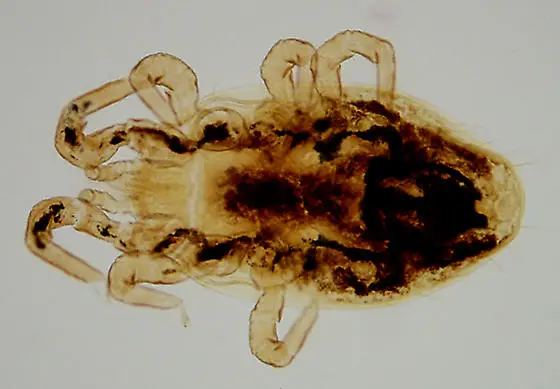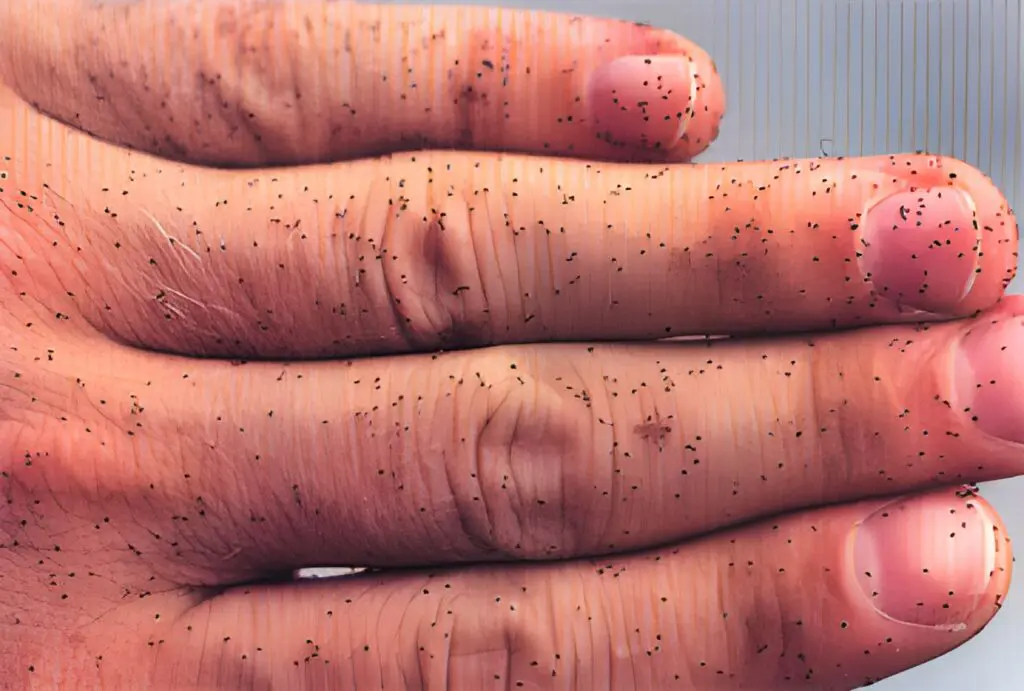To get rid of mites on your budgie, start by consulting a vet who can prescribe effective medications.
Additionally, clean and treat your budgie’s environment using mite sprays. Consider homemade remedies like vinegar solution, essential oils, or Neem Oil, and ensure regular hygiene maintenance.
For all budgie lovers, dealing with mites is a common challenge. Having had budgies and observed these issues firsthand, I realized the need for a comprehensive guide on how to treat mites in budgies.
This guide aims to provide solutions to those dealing with this issue, or even those who wish to prevent it.
1. Understanding Budgie Mites
Mites, minute arthropods invisible to the naked eye, are a common menace to our beloved budgies.

These tiny parasites are ectoparasites, meaning they live on the outside of the host, feeding on their skin and feathers.
When mites infest budgies, they cause various health issues, including itchiness, irritation, feather damage, and in severe cases, they may lead to dangerous skin infections.
Budgies are primarily plagued by two types of mites: Scaly Face Mites and Feather Mites.
Scaly Face Mites burrow into the skin around the beak and eyes, causing scaly, crusty patches, while Feather Mites live on the bird’s feathers, often leading to feather loss and discomfort.
Knowing these mites and how they affect budgies can be instrumental in their early detection and prompt treatment.
2. Recognizing a Mites Infestation
Budgie owners must be vigilant to quickly identify a mites infestation, which is crucial to ensure the well-being of their pets.

Here are key indicators and procedures to help you:
Signs and Symptoms of a Mite Infestation
Physical appearance is one of the first signs of a possible mite infestation. Mites tend to cause skin irritation, resulting in your budgie constantly scratching or picking at its feathers.
This could lead to visible bald spots and ruffled, disheveled feathers.
Unusual behavior can also indicate mite problems. Budgies affected by mites may appear restless, especially at night when mites are most active.
They might also show reduced appetite, leading to weight loss.
Observing droppings can provide valuable clues as well. Mites can cause internal issues leading to abnormal droppings.
If the droppings are not their usual solid green and white, this could indicate a mite infestation.
Identifying Mites in Your Budgie’s Environment
Spotting mites in your budgie’s environment can be challenging due to their small size. Mites tend to be more active during the night, hence, examining your budgie’s cage in the early morning can increase your chances of spotting them.
Consider using a magnifying glass to inspect the cage, perches, and toys. Mites often leave a telltale sign in the form of tiny white or grey spots.
These are mite eggs, and their presence confirms an infestation.
You can also check your budgie’s skin and feathers closely for signs of mites or their eggs.
A budgie’s legs and beak are common areas where mites can be found.
3. Common Sources of Budgie Mite Infestations
Understanding how budgies catch mites can help in prevention. Mites can come from various sources including other infested birds, contaminated environments, or even through wild birds if your budgie spends time outside.
Mites are also known to lurk in dirty or poorly maintained cages, making cleanliness a key factor in mite prevention.
The potential harm mites can cause to budgies is substantial. Not only do they cause discomfort and stress, but prolonged infestations can lead to severe skin conditions, feather loss, and potentially, secondary bacterial infections.
These issues can affect the budgie’s overall health, comfort, and well-being.
4. Professional Treatment Options for Budgie Mites
The good news is, mite infestations are treatable, and professional treatments are readily available. Various medications can be effective in treating mite infestations.
Your avian veterinarian may prescribe oral or injectable medications that target mites.
In addition to medications, topical treatments are also beneficial. These treatments are typically applied to the skin or feathers of the budgie and work by killing the mites on contact or disrupting their life cycle.
It is essential to apply these treatments under the guidance of a professional to ensure their safe and effective use.
5. Environmental Treatments for Mite Control
As part of the mite control strategy, you can’t overlook the significance of environmental treatments.
This involves cleaning and treating the budgie’s surroundings, including its cage, toys, and perches. Special mite sprays can be used to treat the environment, ensuring all potential hiding spots for mites are dealt with.
These sprays kill mites and their eggs, breaking their life cycle and thus preventing further infestation.
While environmental treatments can be highly effective, their safety is also paramount. Ensure that all treatments used are labeled as safe for birds.
After using any mite-killing products, allow for proper ventilation before returning your budgie to its cage to avoid any risk of respiratory distress.
6. DIY Remedies to Get Rid of Mites
Sometimes, budgie owners may opt for homemade remedies to deal with mite infestations. Homemade mite sprays, often made using household ingredients, can be an affordable and natural alternative to commercial products.
One popular DIY remedy is a solution of vinegar and water. Other natural ingredients such as essential oils (like eucalyptus or tea tree oil), Listerine, Neem Oil, and Orange Oil have also been used with varying degrees of success.
Remember, while these natural remedies can help control mites, they should not replace professional treatment and advice, especially in severe cases.
Here’s how you can prepare a few common DIY remedies:
1. Vinegar Spray
A simple vinegar spray can deter mites. To make this, mix one part white vinegar with two parts water in a spray bottle.
Lightly mist your budgie’s feathers, taking care to avoid its eyes and nostrils. The vinegar’s acidity can help kill mites.
2. Essential Oil Solution
Certain essential oils, such as eucalyptus and lavender, are known to repel mites. Mix a few drops of your chosen essential oil with a carrier oil like coconut or olive oil.
Apply this mixture sparingly to your budgie’s feathers, always avoiding the eyes and nostrils.
3. Listerine Bath
Interestingly, Listerine mouthwash has been used as a home remedy for mites. To try this, dilute Listerine with water in a ratio of 1:2, and lightly mist it onto your budgie’s feathers.
This should only be a temporary solution as a treatment and is not recommended for long-term use.
4. Neem Oil Application
Neem oil is an organic compound with insecticidal properties. You can apply a small amount of Neem oil to a soft cloth and gently rub it onto your budgie’s feathers.
Neem oil can be potent, so it’s essential to dilute it with a carrier oil.
5. Orange Oil Spray
Like Neem oil, orange oil can help control mites. Dilute a few drops of orange oil in water and spray it lightly onto your budgie’s feathers.
7. Best Practices for Preventing Mites Infestations
Prevention is always better than cure, and the same goes for mite infestations. Taking proactive steps can save your budgie a lot of discomfort and protect their health.
These steps include regular cage cleaning, providing a balanced diet to keep your budgie’s immune system strong, and avoiding contact with wild birds or other potentially infested pets.
Hygiene and maintenance play a crucial role in mite control. Regularly cleaning and disinfecting your budgie’s cage, along with toys and feeding bowls, can go a long way in keeping mites at bay.
Regular checks for signs of mites are also advisable to catch any potential infestations early.
📺 Video
I’m choosing a video that I think is helpful in dealing with bird mites in birds.
Faqs
What Does a Mite Infestation Look Like in Budgies?
A mite infestation in budgies usually presents itself through symptoms such as itchiness, restlessness, and feather damage.
You might notice your budgie frequently scratching itself or losing feathers. On close inspection, you may also see tiny mites crawling on your budgie’s skin or feathers.
Can I Use Household Items to Treat Budgie Mites?
Yes, you can use household items to control mite infestations. For instance, vinegar solution, essential oils, and Neem Oil are known to help control mites.
However, always consult with a vet to ensure any home remedy is safe for your budgie.
How Often Should I Clean My Budgie’s Cage to Prevent Mites?
To prevent mite infestations, it is crucial to maintain a clean environment for your budgie.
Ideally, you should clean the cage thoroughly at least once a week, and spot clean daily.
Remember, mites can thrive in dirty, damp environments.
Can Mite Infestations in Budgies Be Life-Threatening?
Yes, if left untreated, mite infestations can be life-threatening to budgies. Mites not only cause discomfort and stress, but they can also lead to serious skin infections and feather loss.
In severe cases, mites can cause anemia, which can be fatal to your budgie.
